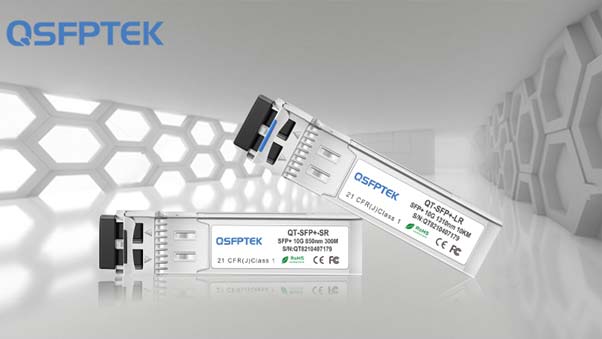Introduction: What is 10GBASE-SR?
10GBASE-SR is a technology specification for 10 Gigabit
Ethernet over optical fiber.
The 10GBASE-SR specification defines the use of four-lane
MSA (Multi-Source Agreement) optical modules, each capable of transmitting data
at 2.5 Gbit/s per lane, for a total bandwidth of 10 Gbit/s. The standard
specifies an industry-standard multi-source agreement (MSA) connector type and
a short-reach multimode fiber optic cable that can be used with 100BASE-SR and
1000BASE-LX4 copper cable segments to provide connectivity between two devices
up to 20 meters apart.
This technology is mainly used in data centers where
bandwidth and latency are important factors in the design of the network
architecture.
10GBASE-SR
modules are optical modules for 10 Gigabit Ethernet. They are also known as
optical transceivers, which convert electrical signals to light signals and
vice versa. The 10GBASE-SR module is used to connect a computer or other
networking device to the network by plugging it into a 10G modular port on the
switch or router.
How does Optical Transmission work?
Optical transmission is a method of sending information from
one place to another. It is the transmission of information through light,
using optical fibers.
The way optical transmission works is by using a laser to
transmit data on a beam of light. This beam of light will be sent through an
optical fiber and then to the receiving end. The receiver will then convert the
beam back into an electric signal and use it in whatever way they want it to be
used.
In order for this system to work properly, there are three
key components:
1) A transmitter that converts electrical signals into an
optical signal; 2) An optical fiber that carries the signal along its length;
3) A receiver that converts the received optical signal back into electrical
form for use by other devices.
It is based on the principle that the speed of light in a
vacuum is the maximum speed at which all electromagnetic waves can travel.
Light waves are used to transmit data from one place to
another and can be sent over long distances without any loss of signal
strength.
Optical transmission can be achieved through direct or
indirect pathways.
The signal strength of optical transmission is dependent on
the length of the pathway and the signal power level.
The most common types of optical transmission are fiber
optic, free-space optics, and infrared laser transmissions.

What are the benefits of using a 10GBASE-SR?
10GBASE-SR is a high-speed, low-latency transmission medium
that is designed to provide bandwidth in excess of 10 Gb/s and is capable of
operating at distances up to 100 meters.
The benefits of using a 10GBASE-SR are that it has lower latency than traditional cabling, it's safe from electromagnetic interference, and doesn't rely on batteries or power.
A 10GBASE-SR
is a type of cabling that has been designed to be used for data transmission in
data centers. It's a type of fiber optic cabling and it's safe from
electromagnetic interference as it doesn't rely on batteries or power.
Some advantages of using a 10GBASE-SR are that it has lower
latency than traditional cabling, so there will be less time between the
transmission and reception of the signal. It's also more affordable than other
types of cabling, which makes it an attractive option for companies who are
looking to save money on their IT infrastructure. If you want to know more
about the 10GBASE-SR optical module, please contact QSFPTEK via sales@qsfptek.com


